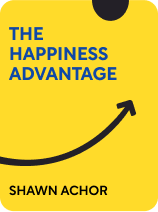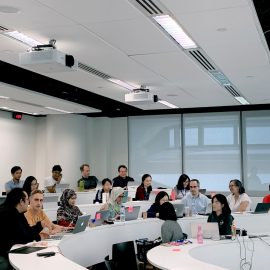

This article is an excerpt from the Shortform book guide to "The Happiness Advantage" by Shawn Achor. Shortform has the world's best summaries and analyses of books you should be reading.
Like this article? Sign up for a free trial here .
Do you want to know how to be happy at work? How can changing your mindset lead to a better time in the workplace?
Shifting your mindset from negative to positive can have incredible benefits for your personal and professional life. Approaching your daily tasks differently will help you understand how to be happy at work.
Keep reading to find out how to be happy at work.
Here’s How to Be Happy at Work
In The Happiness Advantage, Shawn Achor shows how your mindset and mood can dramatically alter your performance in the workplace. Below, you’ll find some helpful tips for how to be happy at work.
If it’s true that your mental approach to an experience actually impacts the outcome, how can you use that to your benefit? First, alter your perspective of tedious, daily tasks to increase your engagement and motivation. If you’re dreading a meeting that you perceive as a waste of time, find something you can gain from the experience: Maybe it’s an opportunity to observe your manager’s leadership style or to practice your active listening skills. Similarly, when you prepare for a task that makes you feel nervous or inept, prime yourself beforehand to focus on your strengths or recall other times when you performed well.
This mindset shift affects not only your work productivity, but also your leisure time. When you consider spending time with family or doing a crossword puzzle as valuable opportunities to unwind and recharge, you will more readily reap the rewards of those breaks. By contrast, when you perceive such activities as distractions and inefficiencies, you’re more likely to squander the benefits and fail to feel refueled afterward.
Since your expectations affect your experiences, here are three steps for how to be happy at work:
Step 1: Believe in Your Ability
If you want to know how to be happy at work, it’s important to believe in yourself. Research shows that an employee’s confidence in her own ability to perform her job well is a better predictor of her actual job performance than her training or skill level. Be confident in your skills and talents—within reason. Don’t overlook your weaknesses or overcommit to things you can’t accomplish, but do focus on your strengths as you approach the tasks in front of you. You can only accomplish something if you first have the audacity to dream it and the confidence to try it.
(Shortform note: To read more about the power of mindset and the importance of dreaming big, check out our summary of As A Man Thinketh.)
Step 2: Believe in Your Ability to Improve
Whether you think you can improve your skills and knowledge is a major determinant of whether you actually improve. This is the key to understanding how to be happy at work. Psychologist Carol Dweck proposes that people have one of two mindsets about their intelligence and abilities:
- People with a “fixed mindset” believe that their skills and capabilities are immutable, which leads to underperformance.
- People with a “growth mindset” understand that exerting effort will lead to improvement, which leads to greater motivation, more effort, and, ultimately, better results.
In one of Dweck’s experiments, she and her colleagues determined the mindsets of 373 7th-grade students and then tracked their academic performances over the following two years. Students who had exhibited a growth mindset steadily raised their GPAs, whereas the students with a fixed mindset stagnated. (Shortform note: To learn more about the benefits of having a growth mindset and how to develop one, read our summary of Carol Dweck’s Mindset: The New Psychology of Success.)
Step 3: Reframe How You Think About Work
Since your mindset dictates your experience, it can have a significant impact on your professional success. Scientists have defined three ways that people approach work:
- Work is a job. It is a necessary component of life and is externally rewarded by a paycheck.
- Work is a career. It represents an ongoing process of working to advance to new levels of achievement.
- Work is a calling. It is innately valuable and brings rewards such as meaning and purpose to life.
These distinct attitudes towards work cut across professions: A doctor can view her work as a job and a janitor can approach her work as a calling. The job itself does not define the experience—the perspective brought to it does. Try these strategies to reframe your view of work:
- Identify your personal life goals, and find ways in which your work helps you work toward those goals. For example, if you’re a law professor and value being a mentor to your students, you can reframe the administrative work that you despise as a way to provide your students with valuable resources that will benefit their careers.
- Focus on the ways that you bring value to your work, and identify the unique skills you contribute.
- Recognize the inherent value of your work, and the ways in which it positively impacts your customers, coworkers, and society. Draw a line down the center of a piece of paper and, on the left side, write down your job duties that feel meaningless. Then, for each one, draw an arrow to the right side of the page and write the purpose of that task. If that purpose still feels meaningless, draw another arrow and write the effect of that result. Continue this process until you reach a meaningful purpose for each task.

———End of Preview———
Like what you just read? Read the rest of the world's best book summary and analysis of Shawn Achor's "The Happiness Advantage" at Shortform .
Here's what you'll find in our full The Happiness Advantage summary :
- How happiness isn’t the result of success, it’s the cause of it
- The benefits of happiness—from increased creativity to improved health
- Strategies for adopting a positive mindset and raising your happiness baseline






